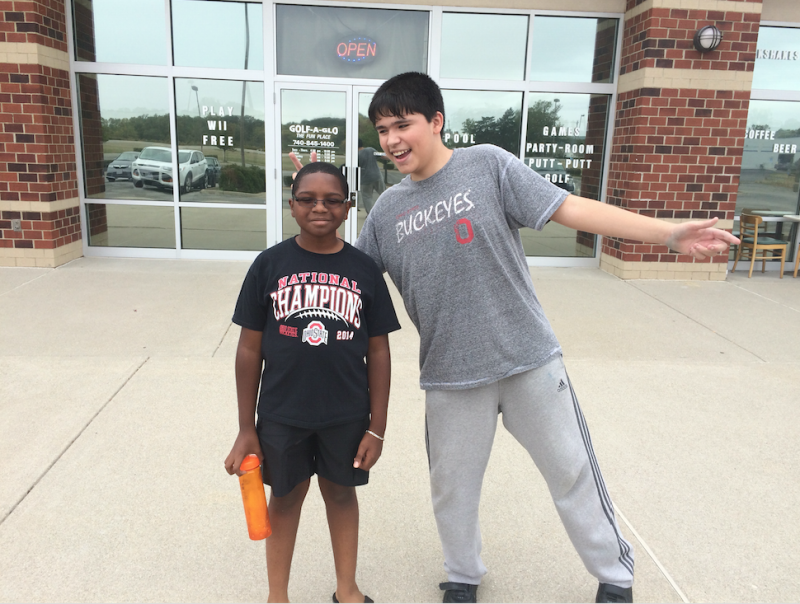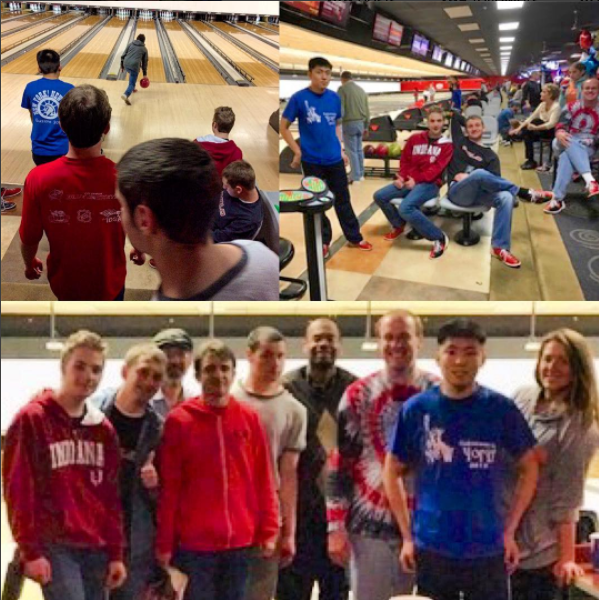
Thank you for following this eight-part training series, Social Skill Integration Through Movement and Strength. This collection of articles is intended to provide ideas to advance an inactive, socially craving child/young adult into a physically and socially strong individual through movement and strength.
In the previous seven training types, social interaction and engagement have continually matured as the environmental climate of training has moved in new directions. We began at the gym and, through progressive types of training, traveled off-site and shifted from one-to-one training to team training and home training. More and more, our overall experience hinges on our ability to connect, first with one another, and then with those surrounding us. Everything leading up to this point has prepared us for this type of training — Play Date with a Friend.
Play Date with a Friend
This type of engagement is exactly what the title suggests — it’s a play date! It’s a weekly or monthly commitment to have a play date with a friend, combining movement, personal interest, choice, and fun.
Finding a Match
One reason why this training type is presented last within this series is that it potentially has given you (and the child) a clearer sense of what relationships to further develop.
Whose name does the child continue to bring up? Which pairing naturally creates synergy? Which training partner shares many of the same interests as the child? Begin here as a starting place. This teammate or training partner now has potential to move to friend status.
Planning Behind the Schedule
Where to Go
The emphasis in this training type is play, freedom, and friendship. Although the training type implies this, a plan and structure are required. Therefore, what happens within the structure is flexible and allows the children to take ownership of the experience.
To get the planning started, shift gears and ask where and what the children would like to go and do. If the children choose the same activity, this is a plus. If the children have different ideas in mind, choose one and then emphasize how you’ll do the other activity another time, or combine multiple ideas into one session (for example, 30 minutes of batting cages followed by 15 minutes of arcade, concluded by 15 minutes of lunch).
If asking the children questions circulated ideas, congratulations. If it didn’t, choose something based on the children’s interest and where they’ll be placed in an advantageous situation to play, take ownership, and have fun with one another.
Just as you prepared for off-site training, a play date will likely include a drive to and from the destination. And although we’d like the place to be familiar to everyone (yourself included), sometimes this will not be the case. Previously discussed in Off-Site Training, many of our planning efforts will be repeated.
Off-Site Logistics
Wherever you decide to go, make sure to have a firm grasp of the location: its layout, rules, and operations. This requires you to visit the location, walk the grounds, visit the website (if applicable), read reviews, and do further research before penciling it in for your next off-site adventure. Some questions worth answering: What are the operating hours? Does participation require a waiver signed by the parents? What’s the fee? How much space do you have to work with? Are reservations required? Are there any time constraints? Is there any staff support? Are any accommodations provided if needed? Are there any areas you need to avoid? If so, how do you plan on doing this? Through your investigative work, you’ll then be able to use these answers as structures in which to set up the schedule. Your programming fits within these structures.
Below are a few articles worth checking out that will take you to a variety of off-site locations. Each one contains the rationale behind the chosen location, the planning behind the schedule, the social integration aspect, a schedule, and results of the day.
Drive to and from Off-Site Destination
The car ride to and from the off-site location is an idle period of time that may be spent in silence or jam-packed with conversation and activity. Leave this up to the children. If appropriate, segment this time to accomplish a variety of tasks: review the schedule, eat a small snack, play a video game, read, talk, nap, and/or help navigate. Another option is that silence and rest fill this chunk of time. It may also be a culmination of the two extremes: in one direction the commute is structured, and in the other it’s laid back and unfolds naturally.
What transpires here will have a direct impact on what is accomplished off-site and the state in which the children return home.
Social Integration
With the logistics covered (children feedback, site formalities, site visit, plan for the ride) this section will help you create subtleties within the schedule to get everyone closer to play, freedom, and friendship. We can’t expect that once we enter a fun house, fun or order will naturally occur. We have to plan for it or at least control what we can so energy is not wasted. Use the personal experiences in each section below to help guide your planning so that social skills are integrated with intention.
Play: Grant the child a choice.
The spirit of this training type is playful. It should relay the feelings we get from “finally it’s Friday,” or “it’s a snow day, school is canceled,” or “open three presents before Christmas morning.”
Make this your chance to verify how training gives us lots of opportunities to enjoy life. One way to accomplish this is to create a flexible schedule where the child's input is highly valuable.
As an example, a past client of mine had regular gym sessions throughout the week, and monthly we would have a play date. I assumed the role of her friend for the play dates. Her choice normally had us go to a park that combined animals (pigs, horses, turkeys, etc.), a library, playground, and trails. I segmented our time to visit each area (the formality), but what we did at each location was her choice (play). In the library, I may have had to read five stories back-to-back as she created a make-believe horse show using toy horses and dolls. At the zoo area, she may have wanted to pet each animal five times. In the playground area, she may have wanted to play tag for our entire chunk of time.
Freedom: Minimize your involvement.
In the case you are not the friend and another child is part of the play date, minimize your involvement, if appropriate. See how things begin to unfold naturally. Give the children the ability to make decisions and navigate within the schedule you created. A sense of freedom may be all the children need to take the reigns to lead the way. Remember, the schedule you create has the flexibility to take various twists and turns. Embrace it!
As an example, I scheduled a play date for Blaine and a friend of his. This play date was at the track and playground (I was able to get away with this type of active play date because Blaine would go anywhere with him). Once we got there, other children were at the track jumping hurdles and running the bleachers. Blaine wanted to learn how to jump hurdles and asked if he should ask to join. I said YES. My only involvement was giving him the permission to ask a question (the courage to ask). For the next 90 minutes, Blaine was taught how to jump hurdles. They raced. They ran the bleachers. They ran to the playground and climbed a rock wall, swung on the swings, slid down slides, and pretended to drive to Bermuda on a stationary car.
Friendship: Foster a lasting one.
The beauty of this training type relies on the child choosing who he or she wants to spend their time with and where. This immediately sets you up for success. Remember: a lot of things will be planned for, but a whole lot of the unexpected will take place, too. In the grand scheme of things, memories are being created by spending time with another where a common interest and experience is shared — you’re just facilitating it.
As an example, a client of mine voiced he wanted to hang out with a friend from school. They had never done anything outside of school (although each parent said that the boys talked about each other constantly). We went to indoor miniature golf, although these two would’ve been fine just sitting in the same room with each other. After the play date, the “friend in school” had a much larger association attached to it. This boy was now a friend in and outside of school. In each sense, the perception of “friend” changed and evolved, allowing the word “friend” to be multi-dimensional and worth treasuring.
Model: Share the experience.
As in the previous example, the two boys constantly talked about each other, but until I planned the play date, they never hung out outside of school. Use your role to model for the parents how to do this and share what steps you took to make everything happen, (pre, intra, and post play date).
The planning and schedule are often missing, since most parents have a misconception that it will all fall into place naturally. Another misconception I’ve seen is that by inviting a friend, this gives the caregiver/parent permission to disengage.
Imagine reporting to the parents after the fact, “I’m not sure how everything turned out. I was talking with other parents in the lounge area and updating my Facebook status.”
You’ve seen it. Walk into a trampoline park. How many caregivers/parents are jumping with their kids or are in the same area, off to the side, “sharing” the same experience? How many caregivers/parents are sitting in the lounge area fumbling through their phones?
Regardless of the scenario, play dates are not the time for caregivers/parents to disengage. It’s the exact opposite. This is the time to join in, observe, take notes, and/or redirect behavior. You relaying your involvement during the play date will model their active role for future play dates.
Schedule
Below is a schedule for a 95-minute play date at the bowling alley. It’s intended for an alley that has a snack area, an arcade, and bowling lanes (most have these auxiliary areas). The schedule is what the children would read if seeing the schedule were something that would help visually construct their day. This is the bare-minimum structure that gives direction yet lots of flexibility. You’ll find the social integration subtleties within the notes, as this will be your job to implement if they’re not naturally unfolding.
11:30 AM – 11:40 AM: Hello/Greet at gym
- Go over schedule – we're going bowling!
- Talk to parents
11:40 AM – 11:50 AM: Drive to bowling alley
11:50 AM – 12:05 PM: Arrive at bowling alley
- Wait in line
- Designate lane
- Check shoe size/Get bowling shoes
12:05 PM – 12:10 PM: Prepare for bowling
- Change shoes
- Choose bowling balls
- Program names on scoreboard
12:10 PM – 12:30 PM: Bowl (1) game
12:30 PM – 12:45 PM: Rest
- Order snack and drink at concession
- Eat/drink
- Find quiet room
12:45 PM – 1:15 PM: Bowl (1) game or play (4) arcade games
1:15 PM – 1:20 PM: Return shoes and pay at counter
1:20 PM – 1:30 PM: Drive to gym
1:30 PM – 1:35 PM: Goodbye/Talk to parents
Notes
Use the meet-and-greet to gauge how the children feel and where they’re at. If Timmy was up late and is very irritable, use your judgment to shut things down and plan for another day. For the drive, the children can help navigate, reread the schedule, listen to music, relax in silence, talk, and/or play video games. Choose wisely. At the bowling alley, based on the schedule, the kids know there is some anticipated wait time before getting started (waiting in line, clerk checking available lanes and shoe sizes, etc.). Acknowledge their patience. Help with shoe tying and ball selection as needed. The kids could also treat the schedule as a mission course and navigate through it themselves, helping each other reach each task. Allow the kids to program their names on the scoreboard if appropriate. There’s also an option of keeping score using paper and pen. This could be a great opportunity to teach how to manually keep score (child-to-child or you-to-children).
Once we get to bowling, how does form look? Can one child help the other and coach frame-by-frame? Allow the kids to team up on strategy with each new formation of pins. Make it a competition. If Katie wins, she gets two extra tokens for the arcade.
After the first game, allow the children to rest. Use this time to get food, drink, and relax. In some cases, you can ask to use a vacant party room to momentarily escape the bright lights and loud music.
For round two, give the children a choice. Have them decide together if they want to play another game or check out the arcade. If bowling is chosen again, are the children still helping one another? Are new stakes set? Maybe they want to test what they learned in the first round and see if they can replicate efforts alone. Maybe you can sit back and observe from afar.
After the game(s), return shoes and pay for bowling. On the drive back to the gym, offer the same choices from earlier. It’s okay if they want to shut their eyes, too. Returning the children back to their parents, be sure to share everything the children accomplished today. Suggest a phone call to further discuss your active role.
Training takes on a whole new meaning when you’re working with children and young adults with high-functioning autism. It’s so much more than being in a gym setting, performing movements, and lifting weights. In this population, the ability to connect with one another on a consistent and responsive basis is huge, and oftentimes limited.
Think about it — how many people in the child's life get him or her moving (literally and consistently) in and out of comfort zones, all while experiencing fun, accomplishment, and constant interaction with others?
Who else in the child's life focuses on what he or she can do, clearing the pathway for a life-long commitment to creating healthy choices?
Hopefully, this begins with you.
Transition to the Art of Programming
To seal this series up, next month’s article will suggest ways, with given examples, to use the eight training types to create a program. This is where the art of programming comes into play, providing a cadence to the training process. Regardless if you're working with a four-year-old or 40-year-old (and every age in between), you can continually pull from these eight training types.
Thanks for reading. Please use the comments section below to ask any questions. I’d love to help any way I can.
WHOLE SERIES











